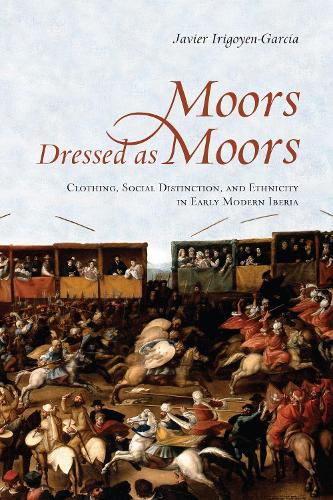Readings Newsletter
Become a Readings Member to make your shopping experience even easier.
Sign in or sign up for free!
You’re not far away from qualifying for FREE standard shipping within Australia
You’ve qualified for FREE standard shipping within Australia
The cart is loading…






In early modern Iberia, Moorish clothing was not merely a cultural remnant from the Islamic period, but an artefact that conditioned discourses of nobility and social preeminence.
In Moors Dressed as Moors, Javier Irigoyen-Garcia draws on a wide range of sources: archival, legal, literary, and visual documents, as well as tailoring books, equestrian treatises, and festival books to reveal the currency of Moorish clothing in early modern Iberian society. Irigoyen-Garcia’s insightful and nuanced analyses of Moorish clothing production and circulation shows that as well as being a sign of status and a marker of nobility, it also served to codify social tensions by deploying apparent Islamophobic discourses. Such luxurious value of clothing also sheds light on how sartorial legislation against the Moriscos was not only a form of cultural repression, but also a way to preclude their full integration into Iberian society. Moors Dressed as Moors challenges the traditional interpretations of the value of Moorish clothing in sixteenth and seventeenth-century Spain and how it articulated the relationships between Christians and Moriscos.
$9.00 standard shipping within Australia
FREE standard shipping within Australia for orders over $100.00
Express & International shipping calculated at checkout
In early modern Iberia, Moorish clothing was not merely a cultural remnant from the Islamic period, but an artefact that conditioned discourses of nobility and social preeminence.
In Moors Dressed as Moors, Javier Irigoyen-Garcia draws on a wide range of sources: archival, legal, literary, and visual documents, as well as tailoring books, equestrian treatises, and festival books to reveal the currency of Moorish clothing in early modern Iberian society. Irigoyen-Garcia’s insightful and nuanced analyses of Moorish clothing production and circulation shows that as well as being a sign of status and a marker of nobility, it also served to codify social tensions by deploying apparent Islamophobic discourses. Such luxurious value of clothing also sheds light on how sartorial legislation against the Moriscos was not only a form of cultural repression, but also a way to preclude their full integration into Iberian society. Moors Dressed as Moors challenges the traditional interpretations of the value of Moorish clothing in sixteenth and seventeenth-century Spain and how it articulated the relationships between Christians and Moriscos.